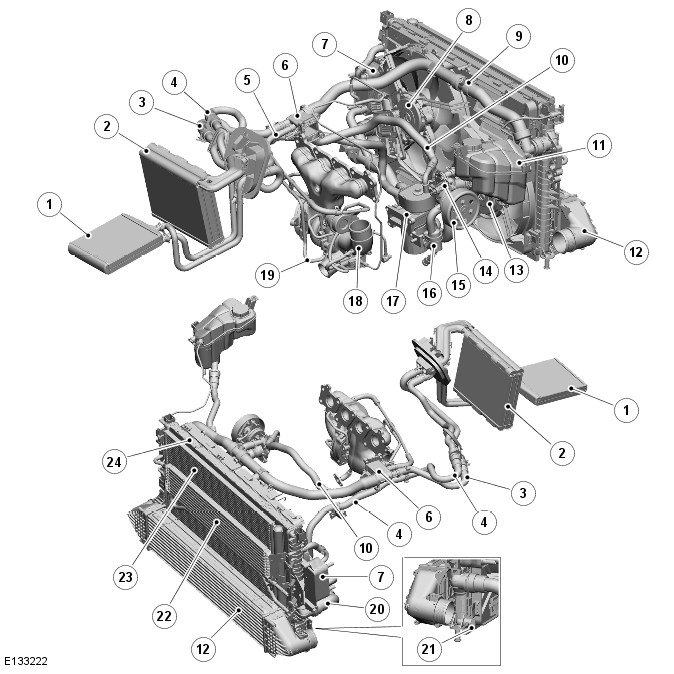Range Rover Evoque: Engine Cooling - Component Location, System Operation and Component Description
Component Location
COMPONENT LOCATION

- Heater core
- Air Conditioning (A/C) Evaporator (ref only)
- Heater inlet hose
- Heater outlet hose/Oil cooler inlet hose
- Turbocharger water outlet pipe
- Water outlet
- Transmission fluid cooler
- Electric cooling fan - Left Hand (LH)
- Radiator top hose
- By-pass hose
- Degas tank
- Charge air cooler (reference only)
- Electric cooling fan - Right Hand (RH)
- Thermostat and housing
- Water pump
- Block heater (where fitted)
- Engine oil cooler
- Turbocharger
- Turbocharger water inlet pipe
- Radiator bottom hose
- Engine coolant drain plug
- Transmission oil cooler (hot climate markets only)
- A/C condenser (reference only)
- Engine cooling radiator
Overview
OVERVIEW
The pressurized cooling system allows coolant to circulate around the engine and the heater circuit while the thermostat main valve is closed. The primary function of the cooling system is to maintain the engine within an optimum temperature range under changing ambient and engine operating conditions. Secondary functions are to provide automatic transmission fluid cooling, turbocharger cooling and interior cabin heating.
When the engine is running the coolant is circulated around the engine cooling system by the coolant pump. From the coolant pump, coolant flows through the cylinder block and the cylinder heads. Some of the coolant leaving the engine is directed through the turbocharger before returning to the water outlet.
The main engine thermostat is located at the engine inlet up-stream of the water pump. During initial engine warm up the thermostat main valve is closed: preventing coolant flow through the radiator and transmission cooler. When the thermostat main valve is closed, coolant is circulated through the bypass circuit, cabin heater, engine oil cooler and degas tank to allow these systems to function during warm up.
Once the coolant temperature exceeds the thermostat start to open temperature of 82-90

